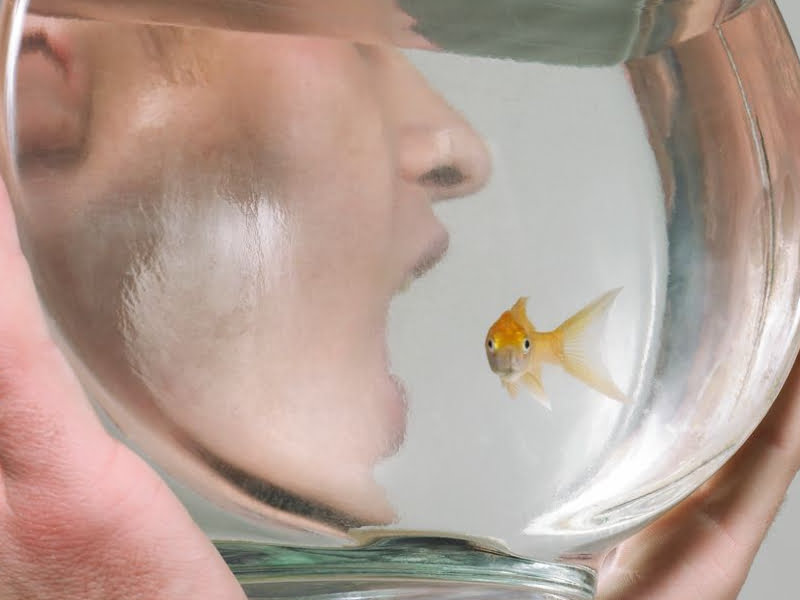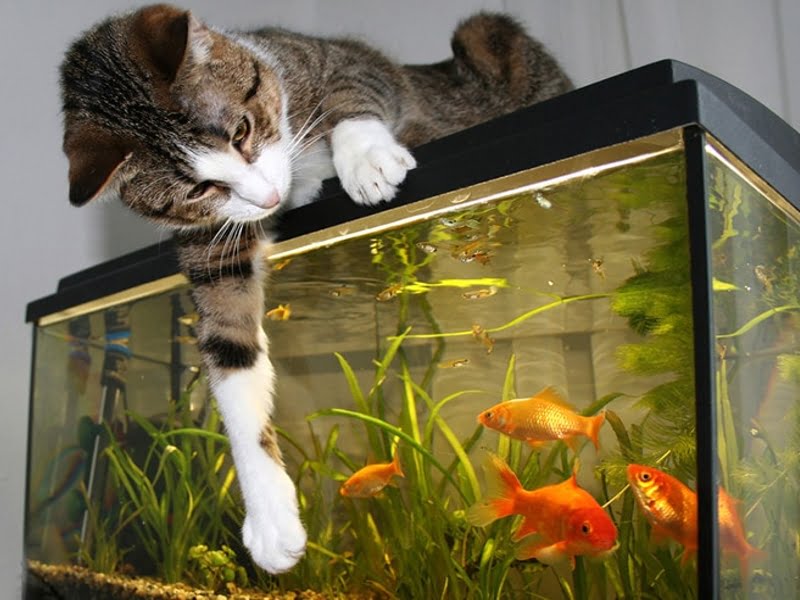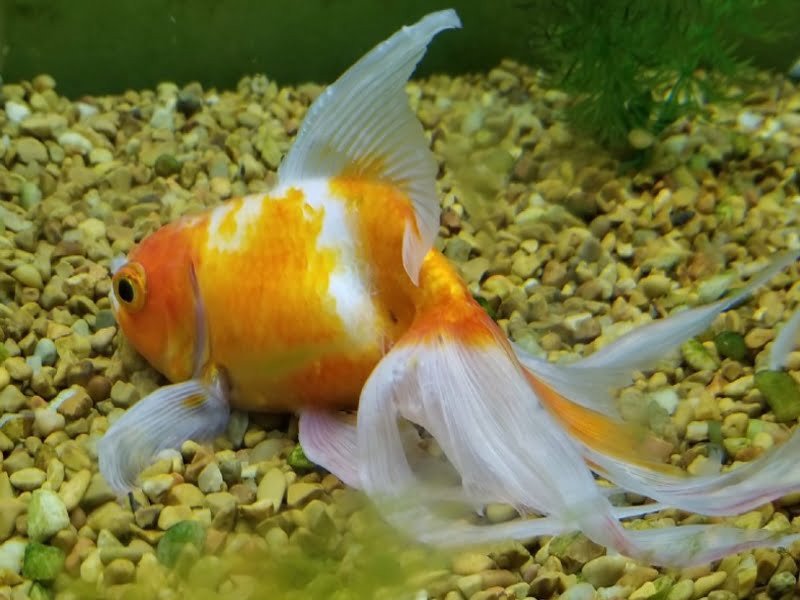Have you ever seen some random guys who had done crazy challenges like eating a live goldfish on the internet, even in real life, and being curious about what will happen then? Or your naughty pet ate a goldfish, and you have been too worried about this? This horrible action is also called Goldfish Swallowing and was a fad popularized in American colleges in the late 1930s. It came back again, called Neknomination.
Seems some persons have brought it back again, along with this question. So, I’ll show you the side effects of eating a live goldfish, including the causes, in these cases. Also, I have some advice for you: Remember not to do anything like that because the consequences can be too catastrophic. Your pet ate a goldfish just as an accident? We have some immediate methods for you before having a meeting with your doctor.
Related Articles:
- Can You Get Sick From Eating A Live Goldfish: Is It A Good Idea?
- Are Goldfish Edible? – 3 Reasons They’re Never A Great Meal
- Can Axolotls Eat Goldfish? – Axolotls’ Best Tankmates
Side Effects Of Eating A Live Goldfish For Human: What Can Kill You
The Causes
Goldfish can carry parasitic infections such as Capillariasis Philippinensis, aka intestinal worms. Humans are most likely the main definitive host. Transmission occurs primarily through eating undercooked fish, including goldfish.
I think I need to tell you the life cycle to draw its dangers in more detail now. Let’s find out.
- Like other common infections, thick-shelled, unembryonated eggs (eggs that lack fertilization) are usually passed in a person’s stool, where they hatch in 5–10 days.
- When goldfishes eat the eggs, the larvae hatch, move through the intestine, and move to the tissues.
- When people eat these raw goldfishes or are not cooked enough, they get sick. They live in the small intestine of humans and burrow in the mucosa there.
- In addition to the unembryonated, shelled eggs that are released into the environment, the females can also make shellless eggs with only a vitelline membrane that hatch in the uterus or intestines of the female.
- When the larvae are released, they can get back into the intestinal mucosa and cause an infection from the inside. This could cause an infection to hyperinfection. It means when you repeated reinfection with larvae produced by parasitic worms already in the body due to the ability of various parasites to complete the life cycle within a single host.

Goldfish can also carry Fish Tuberculosis (Fish TB), also more properly called Environmental Mycobacteriosis. You should know this disease make its effect on most aquariums. Your little guy may not show any symptoms, or it take a very long time enough for you to realize the difference. It is a slow-moving disease. And many fish have this virus and then recover entirely, but not you. Please bear in mind this is zoonotic bacteria.
The other bacterium on goldfish is Mycobacterium Marinum. The elbows, knees, and feet are often affected after immersion in contaminated water, and the hands and fingers after handling goldfish or goldfish tanks. Remember that Mycobacterium Marinum is slow-growing mycobacteria, and it makes this bacterium more dangerous.
The gill flukes of goldfish are where flatworm parasites lay their eggs, whereas body flukes create live offspring. Without a microscope, you will not be able to see flukes, but a skin scrape will aid in the identification process. Flukes are white and scarcely visible on light-colored goldfish, however, they are obvious on dark-colored goldfish such as black moors. When it hatches, the worm is typically 1 millimeter long. If not properly recognized and treated, flukes can become highly dangerous for goldfish as well as those who consume them.
Symptoms
A protein-losing enteropathy can lead to cardiomyopathy, severe emaciation, cachexia, and even mortality occur when patients with capillariasis philippinensis are not properly treated.
These intestinal worms can cause diarrhea, abdominal pain, and exhaustion as well.
Immunocompromised people tend to develop clusters that may extend proximally along the course of the lymphatics, whereas healthy individuals infected by Mycobacterium Marinum frequently have a single lesion.
For Animals: Are The Side Effects Of Eating A Live Goldfish Negative?

The answer is based on what your position is, but I highly warn you not to feed your pet a goldfish. This isn’t a fresh source for your pets’ health.
Repurposed aquariums that were once used to contain fish have been found to transfer mycobacterial infections (bacteria carried by goldfish) to reptiles. Do you recall that Mycobacteriosis is a type of zoonotic bacteria? Additionally, reptiles may exhibit nonspecific symptoms of sickness, skin lesions, and internal organ granulomas, which may be accompanied by stomach distension. Mammals and birds can also develop localized or disseminated cutaneous and internal lesions caused by nontuberculous mycobacteria.
Is it possible for a cat to eat a goldfish? Yes, yet they don’t really enjoy it. As long as you’re confident that the goldfish came from a location free of contaminants, you’re Okay to continue. It’s not a good idea, in my opinion. Eating a goldfish carries hidden risks, such as bonding and others.
Video: Identify And Avoid Goldfish TB
FAQs
Can a goldfish live in your stomach?
A human stomach is a rather awful environment for a living organism; it’s high acidic, and full of noxious gases from the digestion of food, so a goldfish would perish in less than three minutes. Typically, a goldfish’s stomach would be somewhat hostile due to the high acid level, and you’d need a substantial amount of water to neutralize the stomach’s acidity to make it habitable for any period of time. If there was a substantial amount of freshwater present, to begin with, it might likely survive for a short time (no more than 5 minutes).
What does a real goldfish taste like?
It is unlikely that they are as appetizing as other freshwater fish. If you had a goldfish as a pet, you probably imagined that it tasted like the fish flakes and pellets it consumed.
What do goldfish like eating?
Pet goldfish quickly consume pellets, flakes, and chopped fresh veggies including lettuce, zucchini, and peas. Additionally, they adore brine shrimp and bloodworms.
Conclusion
Because these bacteria, Capillariasis Philippinensis, Fish Tuberculosis, Mycobacterium Marinum, and many types of flukes, can still be alive though you cooked goldfish, it’s the best for you and your pets not to eat it.
After consuming a goldfish, if you or your pets experience any symptoms, please have a meet with your doctor as soon as possible to get the right treatment.

Annette M. Chaney is an experienced marine biologist with over 20 years of experience as an aquarist and fishkeeper. She started her first aquarium at a young age, filling it with frogs and goldfish obtained from the ten-cent pet store.
Annette grew up caring for and breeding African Cichlids, which led to a hobby in high school that doubled as a profitable means. Attending Reed College gave her time to solidify herself as an accomplished aquarium caretaker with an eye for sales. After that, from 2009 – 2013, she studied at Roger Williams University – one of the most prestigious universities for Aquaculture and Aquarium in USA. She is the founder of AquariumCircle since 2010.
